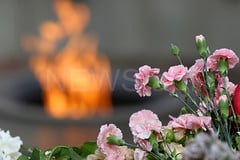
The 21st century’s most extensive campaign of cultural cleansing to date may not have happened in Syria, but in largely ignored part of the Transcaucasian plateau, The Guardian reported.
According to a report published in the art journal Hyperallergic in February, the Azerbaijani government has, over the past 30 years, been engaging in a systematic erasure of the country’s historic Armenian heritage. This destruction of cultural and religious artifacts exceeds Islamic State’s dynamiting of Palmyra, according to the report’s authors, Simon Maghakyan and Sarah Pickman.
Maghakyan, a Denver-based analyst, activist and lecturer in political science, labels it “the greatest cultural genocide of the 21st century.” He grew up with stories about his father visiting a beautiful, mysterious place called Djulfa. Located in the Azerbaijani enclave of Nakhichevan, on the banks of the Araxes River, it was the site of a medieval necropolis, the largest ancient Armenian cemetery in the world. Visitors through the centuries, from Alexandre de Rhodes to William Ouseley, had noted the remote location’s splendor.
At its height, the graveyard counted around 10,000 khachkars, or cross-stones, the earliest dating back to the 6th century. Unique to Armenian burial traditions, these distinctive tall steles of pinkish red and yellow stone feature crosses, figurative scenes and symbols, and highly decorative relief patterning.
“By the time the Soviets formalised the autonomous regions of Nagorno-Karabakh and Nakhichevan in 1920, after decades of plunder, less than 3,000 khachkars remained,” The Guardian wrote. “Subsequent episodic vandalism led Unesco in 2000 to order that the monuments be preserved.”
















